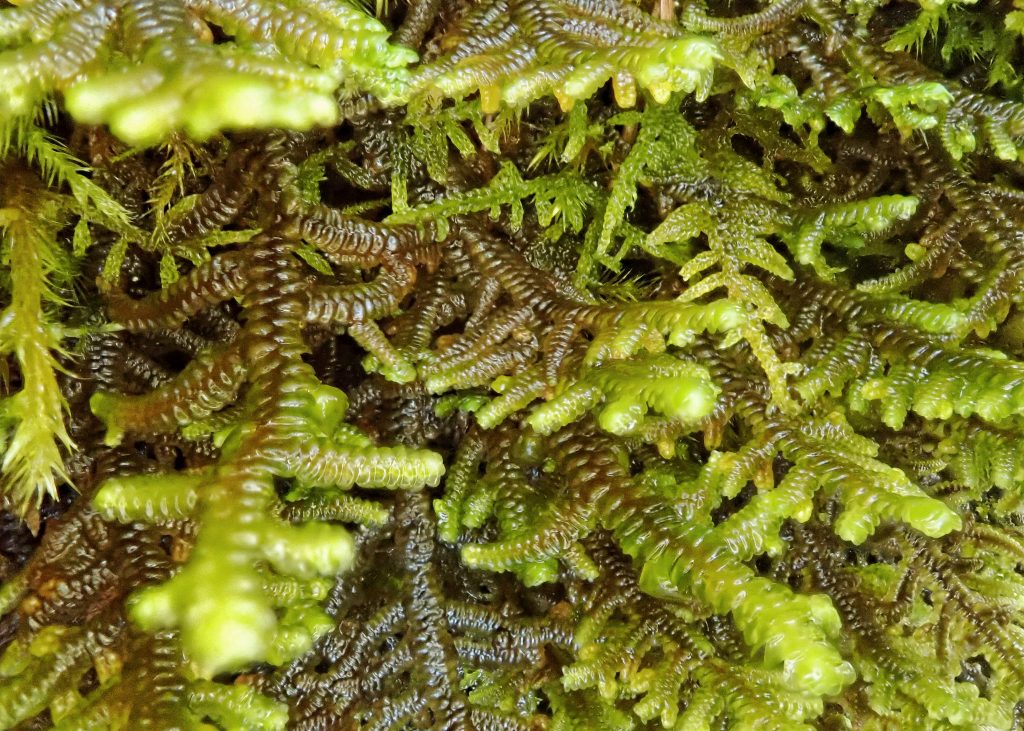
Next up on my cliff survey is the liverwort Porella navicularis, representing a new division (phylum) for these profiles, Marchantiophyta. They are Bryophytes, a paraphyletic group of plants that reproduce by spores, along with mosses and hornworts, and like them the most persistent and visible generation of the plant is the gametophyte.
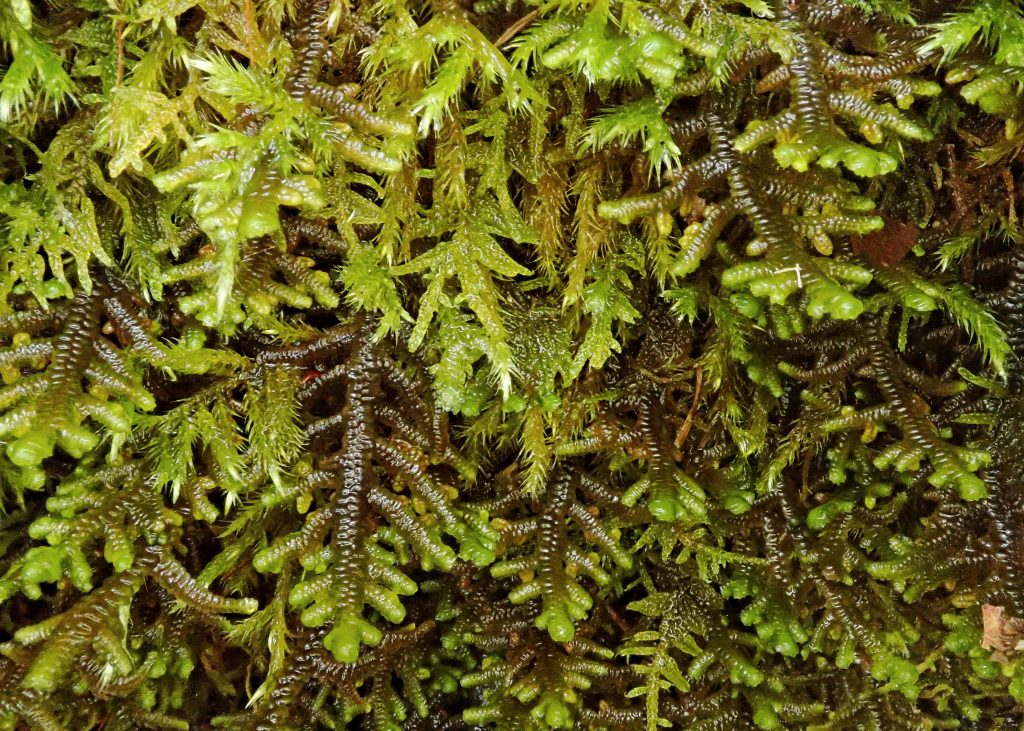
Liverworts tend to be small, like mosses, and have two very different morphological types; leafy liverworts and thalloid liverworts. Thalloid liverworts tend to be flattened, more or less undifferentiated tissue, lacking a stem or leaves. Leafy liverworts are often misidentified as mosses, but they can be distinguished from mosses by the fact that liverworts lack a costa, or midvein, in the leaves. This is most easily determined with magnification. They are also often confused with Lycopods (the mistake I made with Selaginella douglasii) since they also lack a costa. But Lycopods are vascular plants and therefore have a much stiffer stem than the non-vascular liverworts.
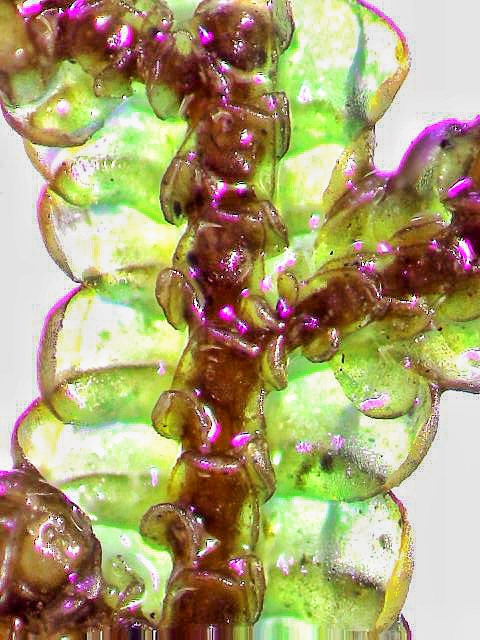
Porella navicularis is the most common species of Porella in our region, and the only one which can consistently be found in abundance in the canopy of Douglas-fir forests and on oak trees.
There is a real dearth of information out there about liverwort identification. David H. Wagner, my liverwort guru (who generously confirmed my identification of this species), has an online key for Oregon (which is also applicable for most species one would find in the PNW) which is excellent, with fantastic photos, and fairly easy for a rookie to use (as long as you have decent magnification), which can be found here.
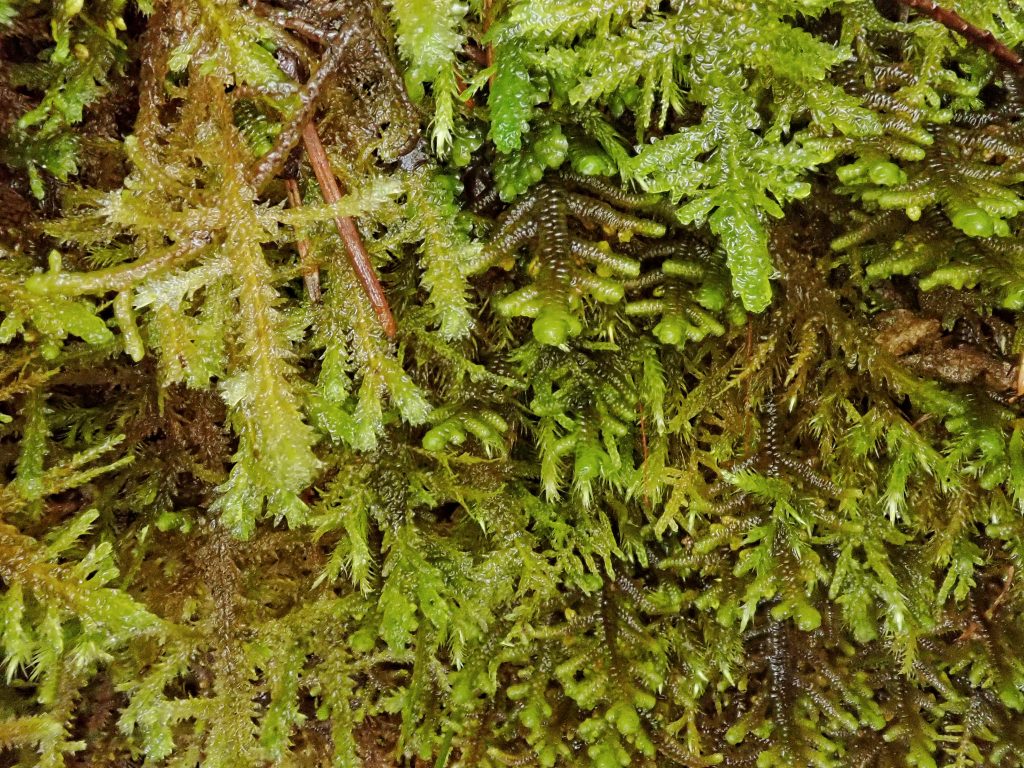
As far as books go there is a very incomplete section on liverworts in “Mosses, Lichens, & Ferns of Northwest North America” (Vitt/Marsh/Bovey, 1988), a very incomplete section on liverworts in “Plants of the Pacific Northwest Coast” (Pojar/MacKinnon, new edition in 2014), and the very complete, although only to genus, “Field Guide to Liverwort Genera of Pacific North America” by WB Schofield (2002). Liverworts are actually quite beautiful, especially under magnification, and it is worth the effort to get to know them.
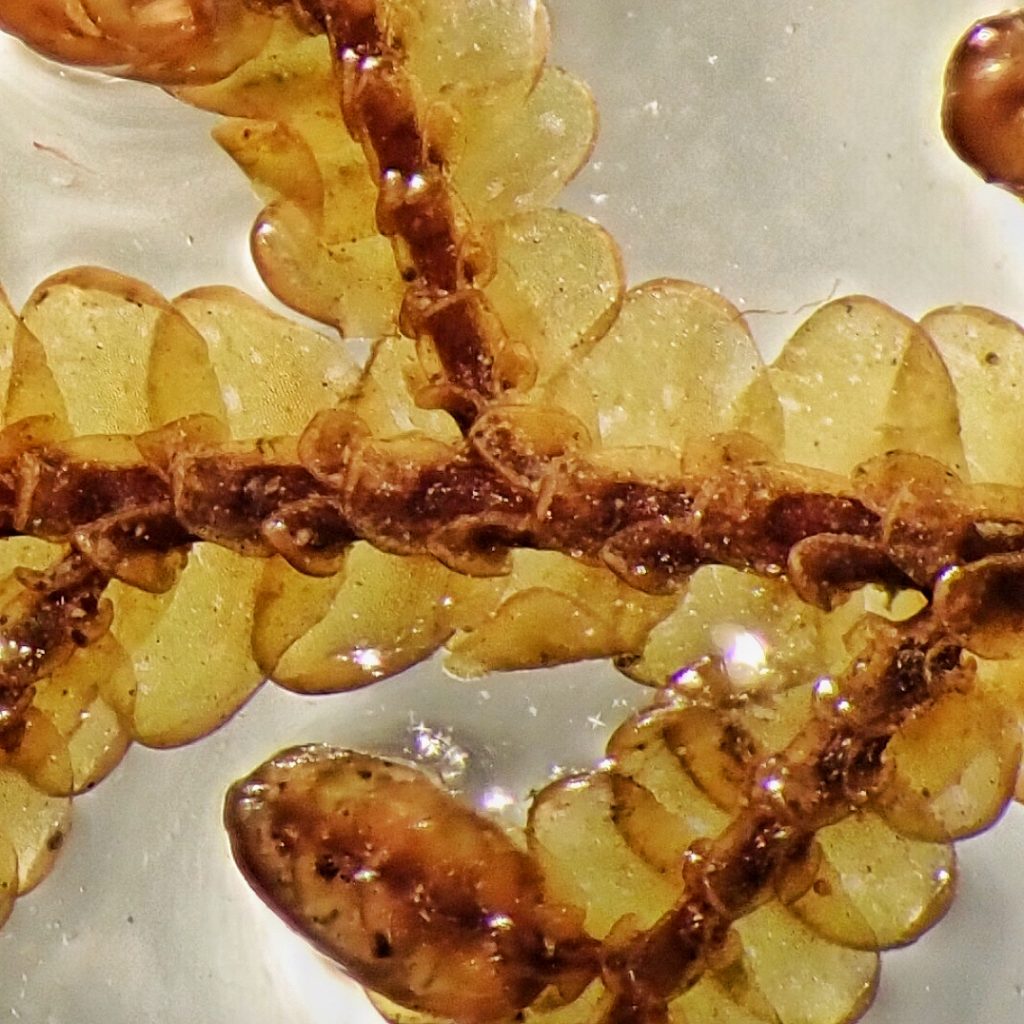
Description– Relatively large (shoots may be up to 4cm long) for a leafy liverwort, olive to dark green and browning with age;complanate leaves are incubous, meaning that, with the leaf tip pointed up, they overlap on the dorsal surface like a Venetian blind turned up. Regularly pinnate branching; forms large mats pointing downward on the substrate, but arching upward towards the shoot tips. Underleaves have tightly, inwardly curled (revolute) margins.
Similar species– The incubous leaf insertion rules out all of the 65 genera in our region except for Radula, Frullania, Bazzania, Calypogeia, and Lepidozia. The other very common Porella, P. roelli, has an acrid, peppery taste (no need to chew up a whole shoot; a tiny bite with tongue tip pressed against it is enough to tell), as opposed to the herbal taste of P. navicularis. Beyond this you will need magnification and a key to identify most liverworts to species.
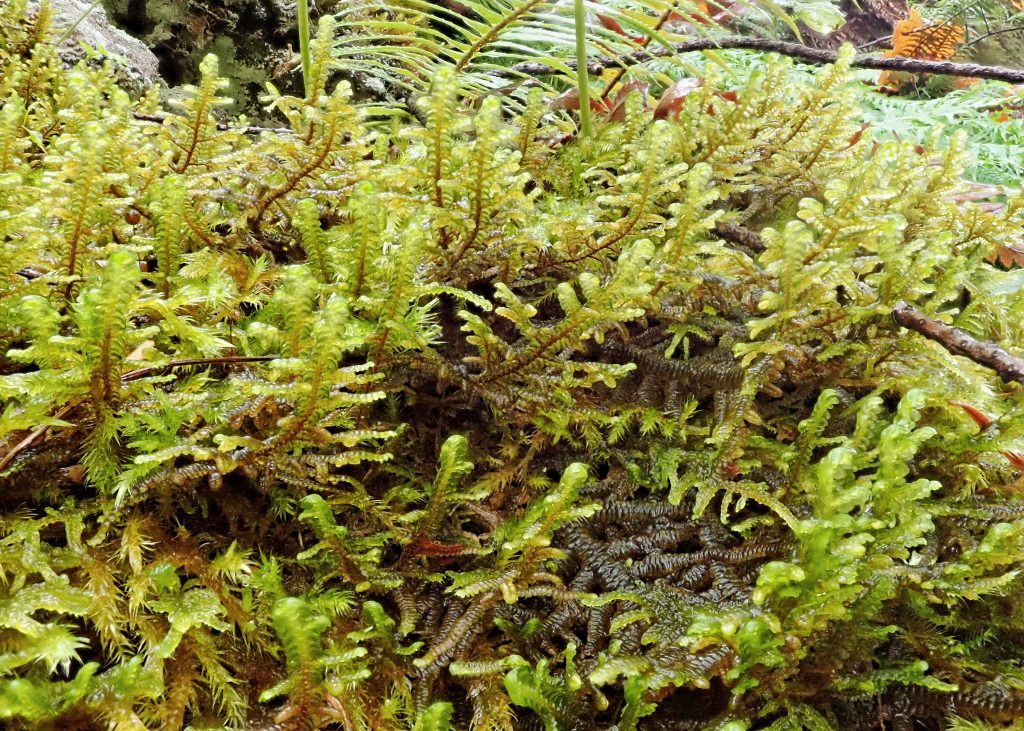
Habitat– Usually found on non-horizontal surfaces of trees and rocks with abundant moisture, at lower to middle elevations.
Range-Primarily west of the Cascades, and in the wetter portions of the foothills of the Blues, Wallowas, Selkirks, and Rockies.
Reproductive timing– Probably mid spring.
Eaten by– Various isopods are known to eat this species.
Etymology of names– Porella is Latin for small pores or openings, and was probably the result of a mistake by J.J. Dillenius (1684-1747), the original describer of the genus, whose only specimen was dried out and worn, having been shipped to him in Europe, via sailing vessel, from Pennsylvania. What he mistook for ‘small pores’, was probably the remains of a desiccated and incomplete perianth. The species epithet navicularis means ‘maker of a small boat’ in Latin, but I cannot ascertain what that references.
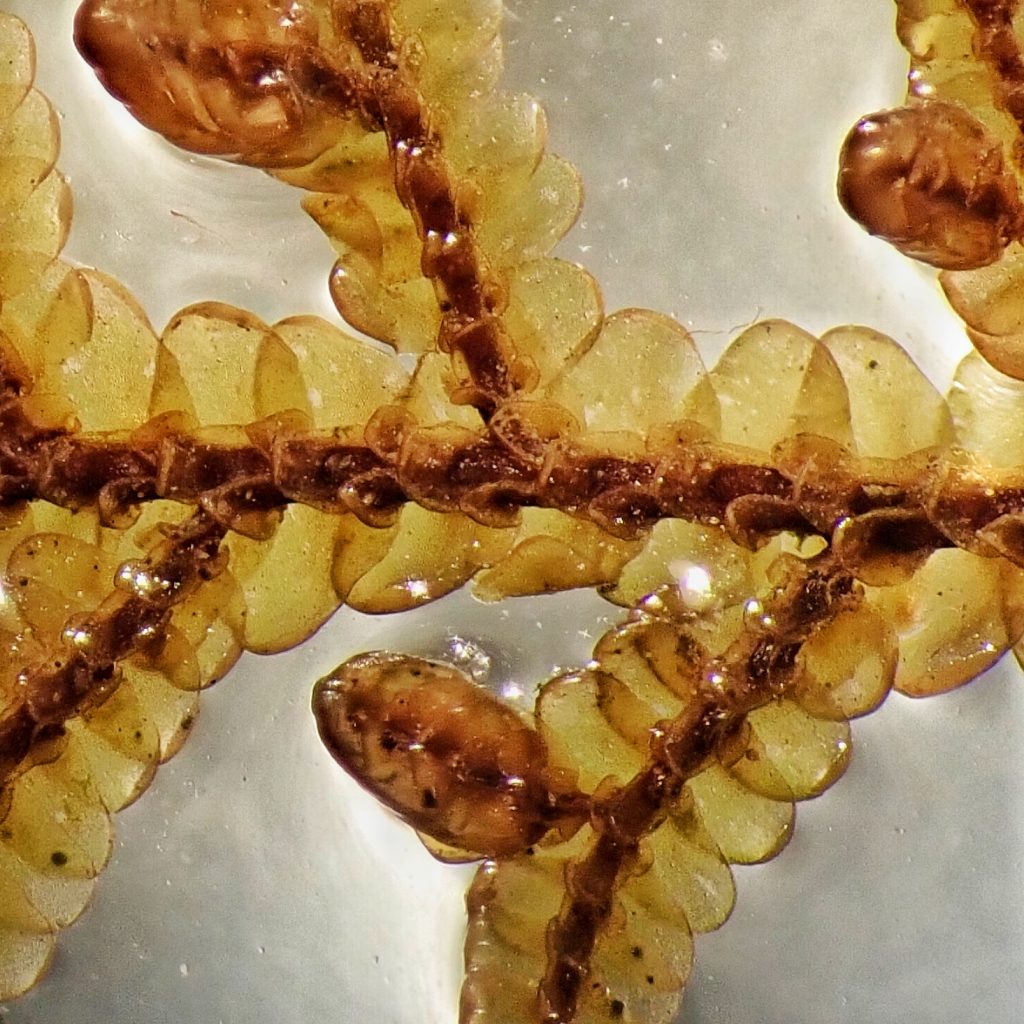
http://fieldguide.mt.gov/speciesDetail.aspx?elcode=NBHEP2Q030
https://www.centralcoastbiodiversity.org/tree-ruffle-liverwort-bull-porella-navicularis.html
http://www.fernzenmosses.com/HepsGenKey/genkey01.htm

I love your photos under magnification of these liverworts and mosses! They look like glass sculptures by Chihuly (if he had more imagination, or knowledge of them).
Thanks! Really glad you’re enjoying them!
This was the first liverwort I IDed on the Huckleberry Trail on the way to Raptor Ridge in Bellingham. So excited to learn more about liverworts and this species in particular
Very cool! I’ll be posting about liverworts and mosses a lot during the winter months, as well as ferns and lichens. Hope you enjoy them too!
We have Porella navicular here on San Bruno Mountain, just outside of San Francisco. Jim Shevock, author of Mosses of California, confirmed the ID. They survive on moisture from fog, as we get little rain compared to you.
Thanks! That very cool. I’ve heard that the fog forests have an interesting diversity of life forms.